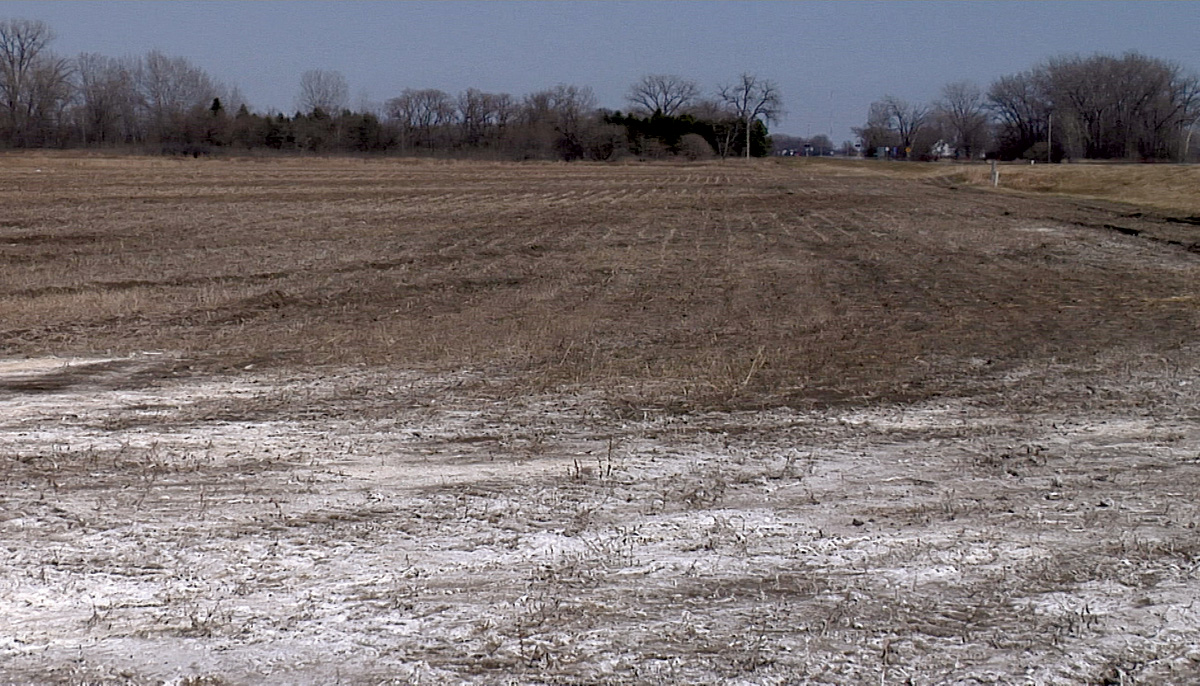Saline soil area in a soybean field
You are no doubt aware of how urban sprawl is gobbling up farm acres quickly in the United States each year. What you may not know is that current farm acreage and production is also being lost to saline and sodic soil issues. While urban sprawl will no doubt continue, saline and sodic problems can be stopped and corrected.
Saline soils have excess salt. Sodic soils have excess sodium. Rather than get into the chemistry of this, I’ll keep it simple by telling you a quick story about a trip I took to Israel over 10 years ago. Before I visited there, I had a couple people say, “Brian, make sure you swim in the Dead Sea. Pack a swimming suit. You have to do it.” My only awareness of the Dead Sea at the time came from reading about it in the Bible, so I didn’t realize the Dead Sea is the lowest point on earth, sitting approximately 1,400 feet below sea level! What is also unique about the Dead Sea is it is about 10 times saltier than the ocean! Water flows from the Sea of Galilee down the Jordan River to the Dead Sea. Since that is the lowest point on earth, the only way water escapes is evaporation. When water evaporates, it leaves salt behind.
Since the Dead Sea is so salty, a person can easily float. It’s a little bizarre being completely buoyant in water, but you can see why people told me I needed to “swim” in the Dead Sea. When I got out where the water was about 15 feet deep, I looked down, and I could see all the way to the bottom. Having been in numerous South Dakota lakes, this was a unique sight. Why could I see to the bottom? It’s because there were no fish, no plants, no algae … everything was dead because of the high salt levels. It was at that moment it hit me: We have a bunch of little “Dead Seas” on our farm. In South Dakota, we call them alkali spots or salty areas of fields. Why are they there? The same reason the Dead Sea got so salty: Water evaporates, leaving salt behind.
In order to fix a sodic or saline spot in a field, improving subsurface drainage is most important, and that probably means adding drain tile. After that step, we want to make sure that calcium and sulfur are both at the ideal levels. Calcium improves soil porosity and is perhaps the most important nutrient for soil health. Sulfur can bind with nutrients like sodium (in a sodic soil) to form a salt, which then leaches out of the soil with good drainage. If the area is really bad, a farmer can also take some straw or corn stalk bales and till them in right there. That helps improve the short-term drainage even more.
After going to Israel, we bought a tile plow for our farm and fixed all our poorly drained areas. I also got better at reading soil tests, and we have now corrected all our saline and sodic areas. While saline and sodic soils are a major threat to agriculture, the good news is these spots can be fixed, and that land can be super-productive in time. We took spots that yielded zero bushels in 2007 to over 250 bushels in 2017!







